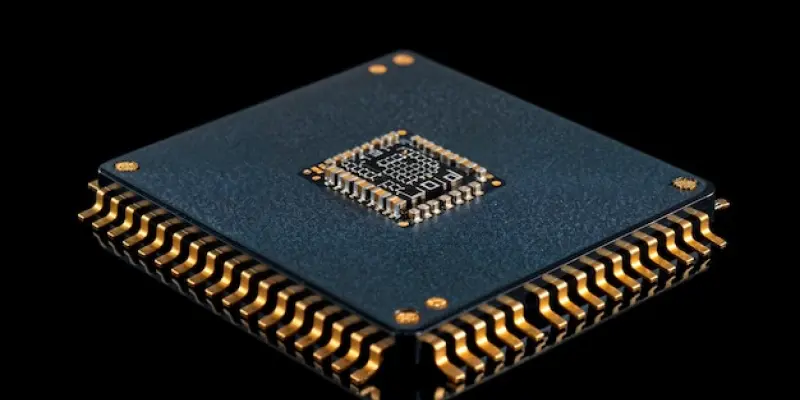In a remarkable showcase of technological innovation, AURAS, the Taiwanese cooling manufacturer, has introduced cutting-edge cooling solutions poised to reshape the landscape of thermal management for next-generation GPUs. During the Computex show, AURAS unveiled a series of groundbreaking cooling designs tailored for both NVIDIA and AMD GPUs, alongside a new motherboard cooling system. Notably, their offerings include a potent 600W cooling module specifically engineered for the anticipated NVIDIA GeForce RTX 5090/Next Module and a robust 350W triple-fan setup designed for AMD’s RX 9070. Both solutions are fortified with advanced heat pipes and RGB LEDs, optimizing thermal efficiency and enhancing visual appeal. This development underscores a significant focus on accommodating increasing power demands, as the NVIDIA solution itself is calibrated for GPUs potentially reaching 600W TDP. Furthermore, AURAS’s prototype liquid-cooled motherboard caters to AMD and Intel sockets, featuring customizable G1/4″ threaded fittings and ARGB lighting. Additionally, the company presented an AIO CPU cooler compatible with both Intel and AMD platforms, delivering a 253W cooling capacity with minimal noise and a sleek design.
Innovations in Cooling Technology
AURAS’s recent offerings embrace the industry’s shift towards advanced cooling methodologies, reflective of the growing needs of high-performance GPUs and CPUs. Implementing technologies such as vapor chambers and multi-fan configurations, AURAS demonstrates the importance of robust thermal management solutions within the realm of high-power computer components. These advancements facilitate the efficient dissipation of heat, crucial for maintaining optimal operational performance and ensuring the longevity of hardware. The integration of RGB lighting involves more than mere aesthetics; it represents an emerging norm in high-end hardware, allowing users to customize and match their devices’ appearance with their unique setups. AURAS is keenly aware of this trend, addressing it with innovative solutions that blend performance with personalization. The overall push towards meeting the steep requirements of next-gen processors and graphics cards reflects an industry-wide pivot in cooling technology, positioning AURAS as a leading contender in thermal management innovation.
Meeting Future Demands
As technology continues its relentless march toward higher processing power, the importance of efficient cooling cannot be overstated. AURAS’s product suite effectively answers the call for systems capable of managing the considerable thermal output of upcoming GPUs and CPUs. This drive towards higher thermal efficiency is essential, not only for sustaining the performance of cutting-edge hardware but also for preventing detrimental heat-induced wear over time. The demand for enhanced cooling solutions is amplified by the shift toward increasingly powerful next-gen processors, necessitating a reevaluation of conventional thermal management techniques. AURAS, by addressing these challenges with an emphasis on both performance and aesthetics, sets a precedent for future advancements in cooling technology. Their innovations in this domain offer a dual benefit, achieving critical performance benchmarks while allowing users to tailor their setups visually. Through this strategic approach, AURAS is solidifying its position as a competitive force in the cooling solutions sector, prepared to meet the demands of modern hardware enthusiasts and professionals alike.
Future Considerations
AURAS, an innovative Taiwanese company known for cooling solutions, has unveiled state-of-the-art technology set to transform thermal management for future GPUs. At Computex, AURAS showcased revolutionary cooling designs, crafted specifically for both NVIDIA and AMD graphics cards, in addition to a novel motherboard cooling system. Among the highlights is a powerful 600W cooling module engineered for NVIDIA’s upcoming GeForce RTX 5090 and a sturdy 350W triple-fan configuration for AMD’s RX 9070. Both cooling solutions come equipped with sophisticated heat pipes and RGB LEDs to maximize thermal performance and boost aesthetic appeal. This represents a substantial commitment to managing the growing power requirements, especially as NVIDIA GPUs could soon operate around 600W TDP. AURAS also introduced a prototype liquid-cooling system for motherboards supporting AMD and Intel sockets, with customizable G1/4″ threaded fittings and ARGB lighting. Additionally, they debuted an AIO CPU cooler compatible with both Intel and AMD platforms, delivering a 253W cooling capacity quietly and stylishly.

